I have just received this beautiful White shark (Carcharodon carcharias) jaw from a client who wishes for me to restore it and re-shape, after having held onto it since 1974.
The jaw came from a shark that was involved in the death of an abalone diver in South Australia. His name was Terence Manuel, and he was bitten on the leg on January 9, 1974. The abalone diver was my clients best friend, and a concerted effort was made to go out immediately and try to catch the shark implicated in the attack.
Terry Manuel was diving for abalone about 137 metres , 10 miles southwest from Streaky Bay in South Australia. The shark attacked shortly after 1 pm, and removed the leg above the thigh, his right arm was badly injured between the elbow and the wrist, and he had gash marks on his back. As the diver’s partner was trying to pull him into the boat, he felt the shark keep tugging at the diver.
I have been told that the shark was caught the next day, and it stayed in the area after the attack.


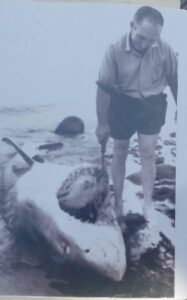
When these shark jaws come to me, especially with such historical value, it is always a difficult decision to make as far as how far does one go with the restoration project. There has to be a balance between making the jaw look presentable and retaining its historic look and value. IN the days, not very much was known as to how to clean shark jaws and set them properly. Many fishermen who caught such sharks would just remove the jaw from the shark, scrape off as much meat and tissue as possible and then just leave them out in the sun to dry.
Sometimes these jaws look nicer like that than cleaned up properly and whitened. The client is usually the person making the decision, although I will always guide the client and let them know what I think should be done to the jaw. Sometimes when teeth are missing, then they can be replaced by making copies of teeth and replaced them in the jaw. In this case though, the jaw will first be soaked in water and then set on a drying board in the correct shape. A decision is then going to be made as to how much the jaw will be whitened. It is important to retain the historical look of this jaw. If that means that apart from changing its shape without any further work to be done, then so be it. In this case as well, a number of teeth are broken, however due to its history, they will not be replaced.
I have taken all the relevant measurements of this jaw, including the inter distal tooth measurements and the upper jaw and lower jaw perimeter. These measurements will somewhat change as the jaw is re-shaped once wet.
The client is interested in getting the jaw restored and then sold. Most likely the jaw will stay in Australia, although because of its history, CITES documentation can be obtained for re-selling overseas. This jaw is such a part of South Australian history, it would be a shame to see it go overseas.
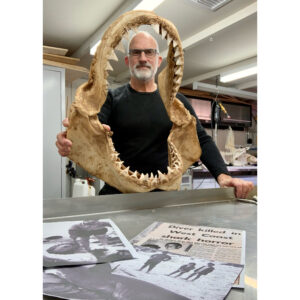
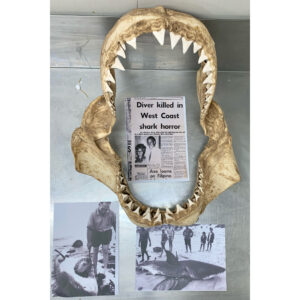
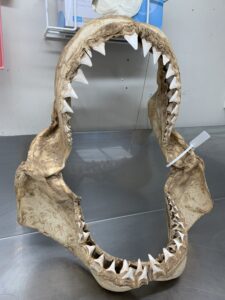
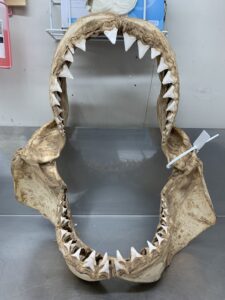
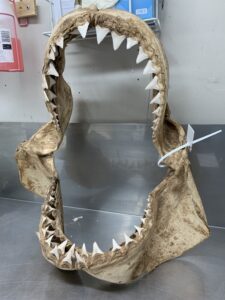

Leave a Reply